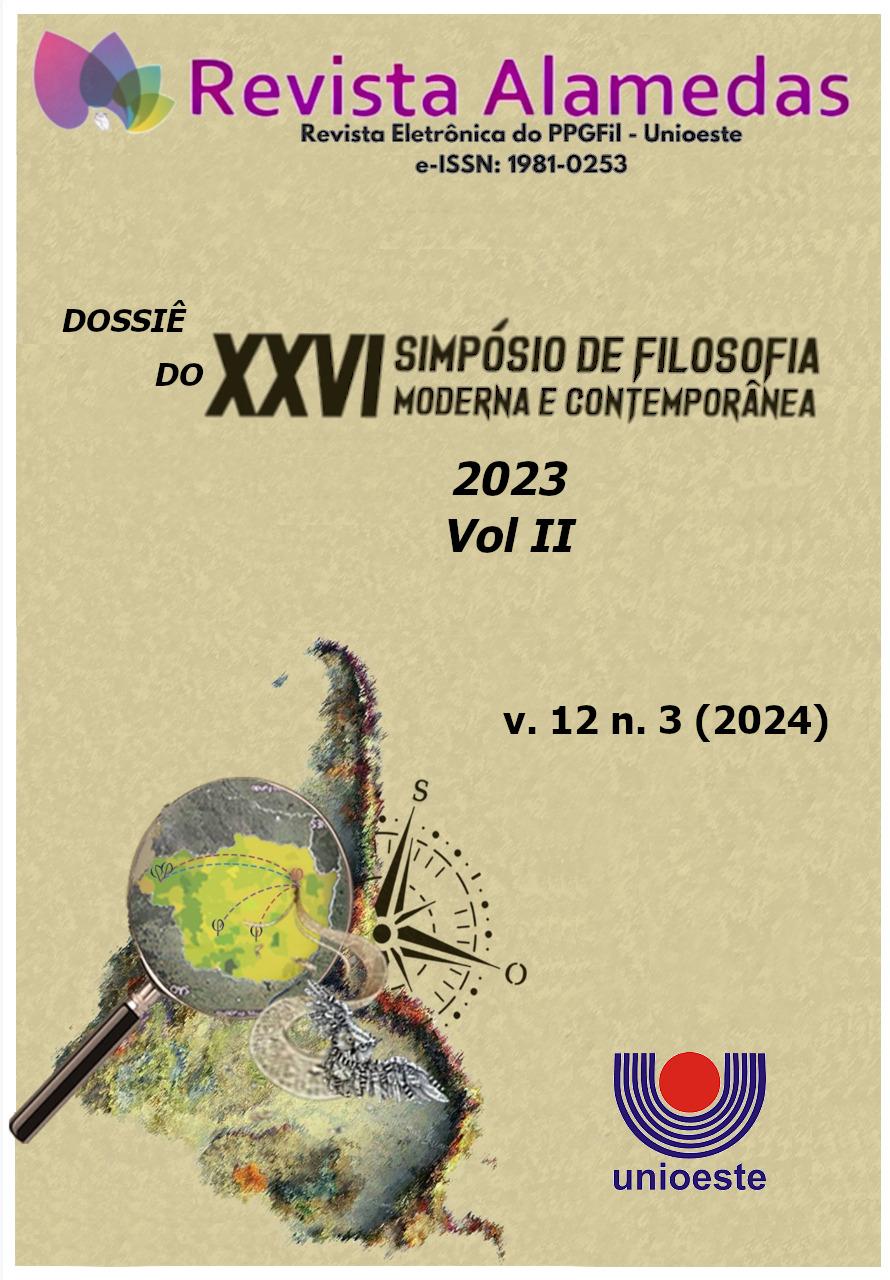Nietzsche e os romanos
DOI:
https://doi.org/10.48075/ra.v12i3.33062Palavras-chave:
Nietzsche, Romanos, Cultura, Moral, GregosResumo
Muito tem-se discutido na pesquisa sobre Nietzsche como um todo a evidente relação de Nietzsche com a Grécia Antiga, de Tales de Mileto até Platão. Ora, não é possível afirmar o mesmo quando se trata da relação de Nietzsche com os romanos. No entanto, quando consideramos o que o filósofo expõe no capítulo intitulado O que devo aos antigos, presente no Crepúsculo dos Ídolos (1889), encontramos afirmações do próprio Nietzsche indicando que os romanos teriam sido mais determinantes que os gregos no que concerne à constituição de seu estilo. Será neste capítulo, também, que Nietzsche reconhecerá a aere perennius romana como um estilo que teria lhe incutido a ambição de constituir e eternizar seu próprio projeto filosófico. Por outro lado, quando consideramos especialmente o que é exposto em Aurora (1881) e no Anticristo (1888), encontramos Roma sendo utilizada por Nietzsche em sua crítica à moral cristã. Essa crítica à moral cristã foi também conduzida pelo filósofo em A Genealogia da Moral (1887), obra em que Nietzsche sustenta a tese de que toda cultura saudável é constituída por duas classes, trata-se da classe dos senhores e da classe dos servos. A primeira classe seria responsável por criar e gerenciar os valores da cultura vigente, a segunda classe, por sua vez, deveria seguir e celebrar tais valores. Para Nietzsche, no cristianismo essa ordem foi invertida, pois são os servos que exercem a função dos senhores, e, com essa mudança, as características dos servos passam a subjugar as caracarterísticas dos senhores, em outras palavras, os cristãos que antes eram dominados pelos romanos, agora exercem a função dos senhores. Desse modo, o legado de Roma será alvejado pelos cristãos como objeto para a sua vingança. Em suma, todo esse percurso tem como objetivo responder a seguinte questão: O que Nietzsche deveria aos romanos?
Downloads
Publicado
Como Citar
Edição
Seção
Licença
Copyright (c) 2024 Alamedas

Este trabalho está licenciado sob uma licença Creative Commons Attribution-NonCommercial-ShareAlike 4.0 International License.
Aviso de Direito Autoral Creative Commons
Política para Periódicos de Acesso Livre
Autores que publicam nesta revista concordam com os seguintes termos:
1. Autores mantém os direitos autorais e concedem à revista o direito de primeira publicação, com o trabalho simultaneamente licenciado sob a Licença Creative Commons Attribution que permite o compartilhamento do trabalho com reconhecimento da autoria e publicação inicial nesta revista.2. Autores têm autorização para assumir contratos adicionais separadamente, para distribuição não-exclusiva da versão do trabalho publicada nesta revista (ex.: publicar em repositório institucional ou como capítulo de livro), com reconhecimento de autoria e publicação inicial nesta revista.
3. Autores têm permissão e são estimulados a publicar e distribuir seu trabalho online (ex.: em repositórios institucionais ou na sua página pessoal) a qualquer ponto antes ou durante o processo editorial, já que isso pode gerar alterações produtivas, bem como aumentar o impacto e a citação do trabalho publicado (Veja O Efeito do Acesso Livre).
Licença Creative Commons
Esta obra está licenciada com uma Licença Creative Commons Atribuição-NãoComercial-CompartilhaIgual 4.0 Internacional, o que permite compartilhar, copiar, distribuir, exibir, reproduzir, a totalidade ou partes desde que não tenha objetivo comercial e sejam citados os autores e a fonte.


